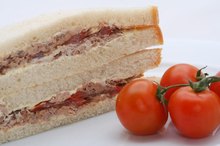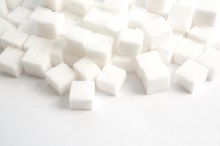What does fact checked mean?
At Healthfully, we strive to deliver objective content that is accurate and up-to-date. Our team periodically reviews articles in order to ensure content quality. The sources cited below consist of evidence from peer-reviewed journals, prominent medical organizations, academic associations, and government data.
The information contained on this site is for informational purposes only, and should not be used as a substitute for the advice of a professional health care provider. Please check with the appropriate physician regarding health questions and concerns. Although we strive to deliver accurate and up-to-date information, no guarantee to that effect is made.
What Three Elements Are Present in All Carbohydrates?
From an elemental point of view, all carbohydrates are created equal. That’s also true from a dietary point of view, as all digestible carbohydrates are broken down into glucose, the body’s primary source of energy 1. However, there are some meaningful differences between various carbohydrates based on how the basic building blocks are assembled.
Water + Carbon = Carbohydrates
Carbohydrates are constructed from carbon, oxygen and hydrogen atoms. The proportion is roughly a 1:2:1 ratio of carbon to hydrogen to oxygen. Since two hydrogens and an oxygen yield one water molecule, this proportion is called hydrate of carbon, from which the term carbohydrate is derived. Your body breaks down carbohydrates into glucose, which fuels the synthesis of adenosine triphosphate, or ATP, the body’s energy currency. When this complex three-phase process is complete, the carbon, hydrogen and oxygen atoms are recycled as water and carbon dioxide.
- Carbohydrates are constructed from carbon, oxygen and hydrogen atoms.
- Since two hydrogens and an oxygen yield one water molecule, this proportion is called hydrate of carbon, from which the term carbohydrate is derived.
Simple Carbohydrates: Monosaccharides and Disaccharides
What Do Carbohydrates, Lipids & Proteins Have in Common?
Learn More
Monosaccharides, or simple sugars, are the smallest type of carbohydrate, containing three to seven carbon atoms. The most common monosaccharide is glucose, followed by fructose and galactose. Each one has six carbons. Free monosaccharides are not found in food in significant amounts. What you do find are disaccharides, which are two monosaccharides bonded together. Sucrose, or table sugar, combines glucose and fructose and is the most common disaccharide. The other common disaccharides are lactose and maltose. Lactose, the natural sugar found in milk, combines galactose and glucose, while maltose combines two glucose units.
- Monosaccharides, or simple sugars, are the smallest type of carbohydrate, containing three to seven carbon atoms.
Complex Carbohydrates: Oligosaccharides and Polysaccharides
Oligosaccharides are short chains of three to nine monosaccharide units. Trisaccharides, which have three monosaccharide units, are the type found most commonly in nature. Tetrasaccharides have four units, while pentasaccharides have five. Polysaccharides are long chains of 10 or more monosaccharide units. Some polysaccharides include hundreds or thousands of “links.” The polysaccharide glycogen is the major form of stored carbohydrate in human and animals. Its highly branched chains of glucose molecules are found in the liver and skeletal muscle tissues. From a nutrition point of view, the other important polysaccharides are starch, the storage carbohydrate of plants, and cellulose, which makes up plant cell walls. Both are also entirely made of glucose units.
- Oligosaccharides are short chains of three to nine monosaccharide units.
- Trisaccharides, which have three monosaccharide units, are the type found most commonly in nature.
Carbohydrate Digestion
Is Lactose an Aldose?
Learn More
Dietary starches and disaccharides are broken down by digestive enzymes into monosaccharides, which are then absorbed by cells in the intestinal wall. Shorter chain saccharides are generally digested more quickly, although this depends in part on what other foods are consumed in the same meal. Oligosaccharides are digested by bacteria in the intestine. Cellulose passes through your body undigested because you don’t have the correct enzyme to break the unique bonds between the glucose units.
- Dietary starches and disaccharides are broken down by digestive enzymes into monosaccharides, which are then absorbed by cells in the intestinal wall.
Related Articles
References
- Medical News Today: What Are Carbohydrates? What Is Glucose?
- Food and Agriculture Organization of the United Nations: Digestion, Absorption and Energy Value of Carbohydrates
- Harvard School of Public Health: Carbohydrates and Blood Sugar
- Hartnell College Biology Tutorials: Cellular Respiration
- Carr, T. P., Gropper, S. S., Smith, J. L. (2016). Advanced Nutrition and Human Metabolism. United States: Cengage Learning.
- U.S. Department of Health and Human Services and U.S. Department of Agriculture. 2015–2020 Dietary Guidelines for Americans. 8th Edition. Published December 2015.
Resources
Writer Bio
Carrie Dennett is a Seattle-based registered dietitian nutritionist and journalist. She has been a health, wellness and nutrition writer since 2004, and currently writes a nutrition column for "The Seattle Times." She holds a Master of Public Health in nutritional sciences from the University of Washington.









